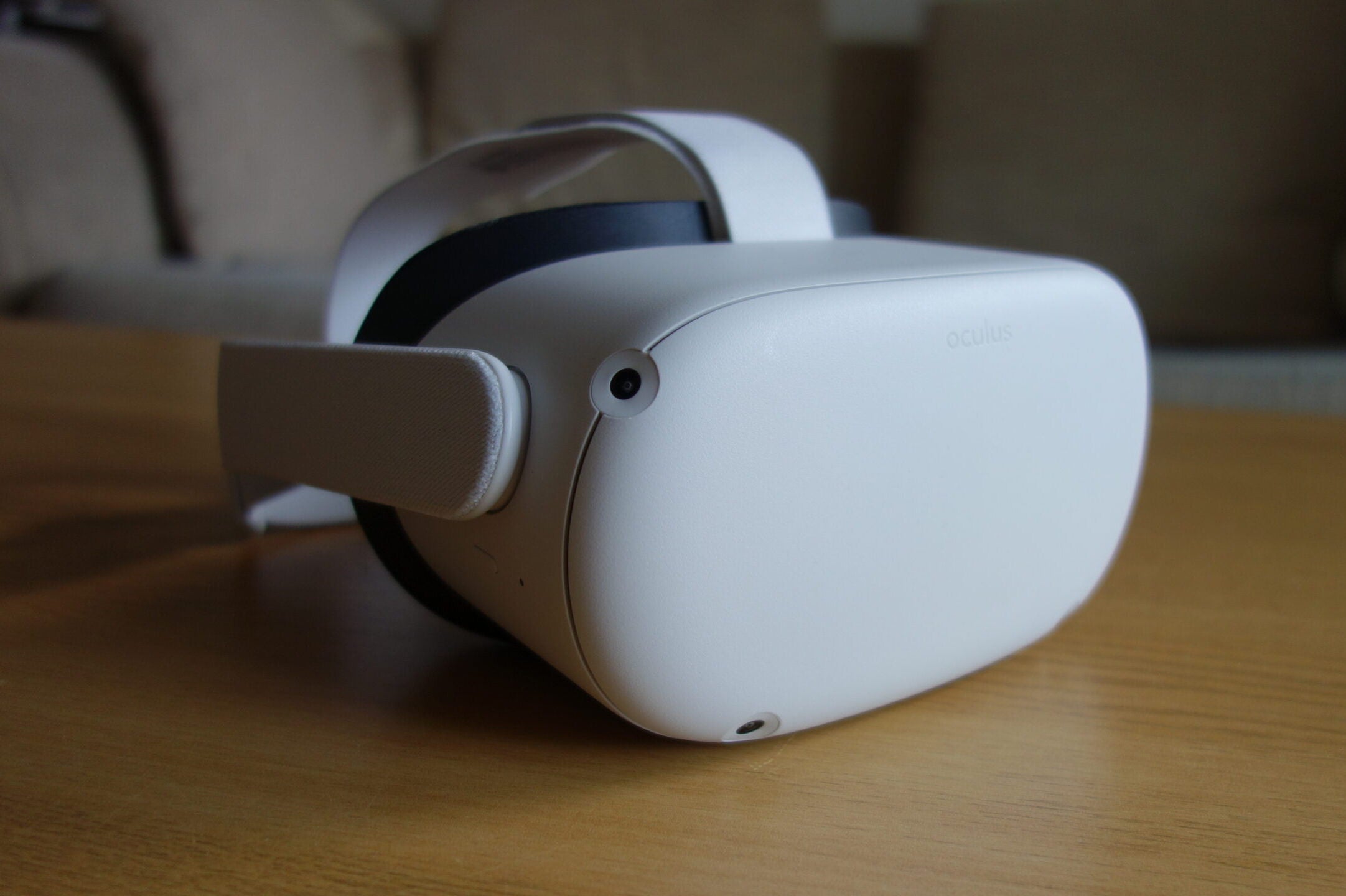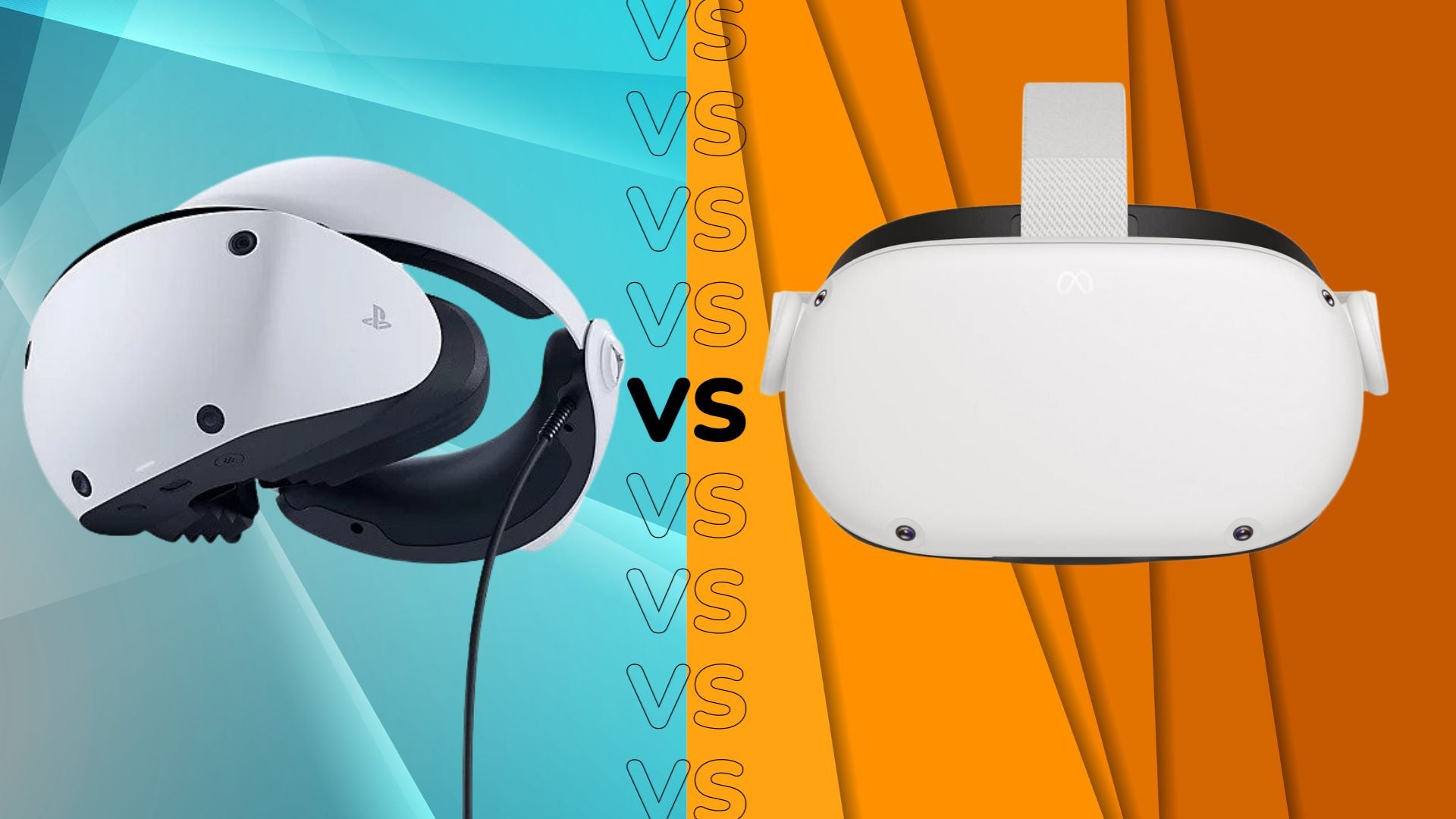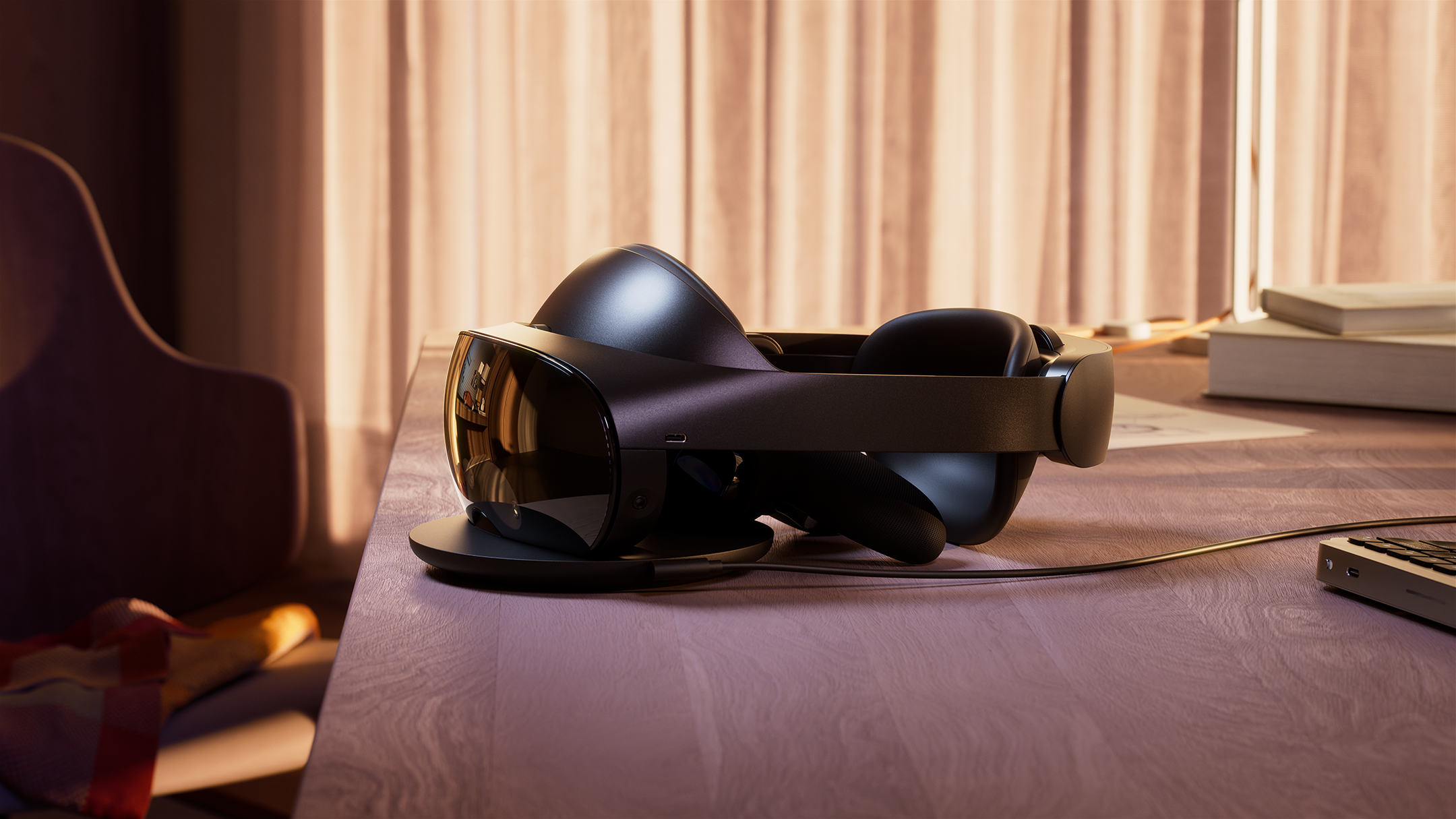Meta Quest Pro vs Meta Quest 2: Should you upgrade your VR headset?

The Meta Quest Pro is finally here, but with the Meta Quest 2 still going strong, do VR fans need to think about upgrading? Here’s how the two headsets from the company formerly known as Oculus compare.
Meta announced the new Quest Pro during the Meta Connect keynote on October 11 and immediately put the device up for pre-order ahead of a release date on October 25.
It’s a world apart from the ever-popular Quest 2 and marks the company’s return to bleeding edge, high-end virtual and (now mixed) reality hardware. It’s largely a work-focused device for now that has overlapping use in the creative industries, Meta says, so there’s probably not going to be a huge crossover in audiences.
Besides, the price disparity is really quite pronounced! Let’s see how the Meta Quest Pro and Meta Quest 2 stack up, in terms of the top specs, features, price and experiences.
Quest Pro actually looks cool
The Meta Quest Pro design is wildly different to the Quest 2. Rather than the larger white headset that has a very pronounced and engulfing presence on the top of the head, eyes, and nose, the Quest Pro is much sleeker. It actually looks a little more like the Magic Leap AR headsets we’ve seen in the past.
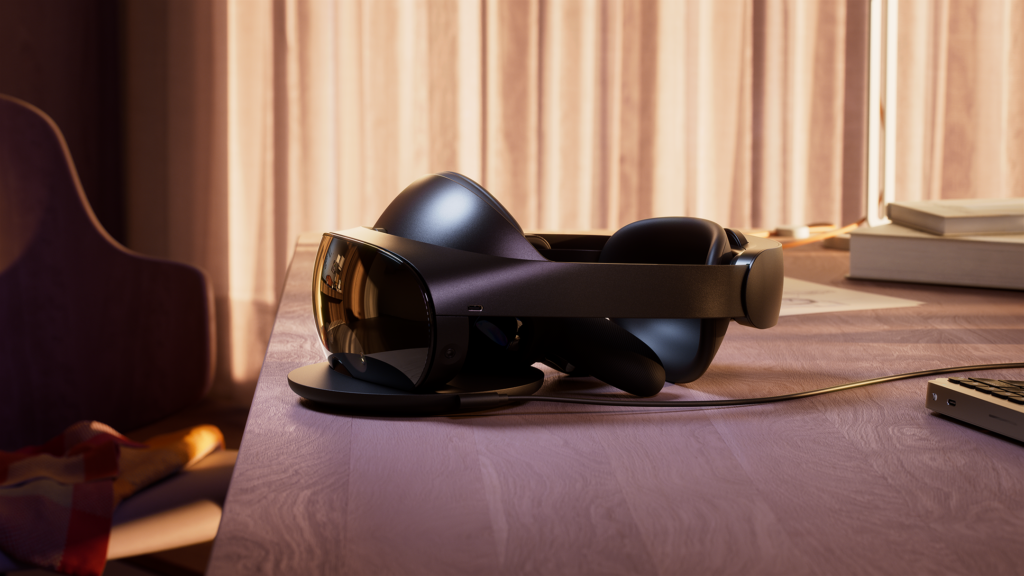
This is possible for a couple of reasons. Firstly, due to new pancake lenses (replacing the Fresnal lenses within the Quest 2) the optical depth has been slimmed by 40%. The battery is now a curved-cell and has been moved to the back of the headset, behind what looks like a more comfortable padded headrest. While Meta hasn’t confirmed the weight, it does look like the slimmer headset will be more comfortable to wear.
The other design changes are due to the below.
It’s not just VR anymore…
While the Meta Quest 2 focuses only on virtual reality experiences – and is designed to be totally immersive and block out any distractions from your field of view – the Quest Pro takes a much broader approach, embracing both the outside world and mixed reality experiences.
It starts with the design, which has greater variable lens spacing (55-75mm compared with 58-72mm on the Quest 2) enabling the experience to be more or less immersive depending on your preferences.
There’s also a sleeker, more open design that is designed for virtual workspaces to be augmented by the real life accessories you use with them, such as the physical keyboard or mouse.
There are also dedicated mixed reality experiences on the way, thanks to a full colour passthrough mode that goes way beyond the low-res black and white passthrough within the Quest 2.
“Mixed reality on Meta Quest Pro lets you combine your physical environment with virtual elements in a realistic way, leading to enhanced social presence, productivity, and collaboration,” the company said. You can get an idea of what Meta has in mind in the video below
Pro is almost four times more expensive
While the Quest 2 recently got a significant price bump to start at £399.99, the Meta Quest Pro costs £1,499.99 for the single configuration, which comes with 12GB of RAM and 256GB of storage.
That gives you an idea of who Meta is aiming this device at. While the Quest 2 is affordable and accessible for fun social interactions, gaming and other experiences, the Pro is aimed at professional use cases and the enterprise market. That’s a lot of money to spend on a piece of tech and then only use it for work.
Thankfully, all of the Quest 2 experiences will still be here on the Pro model, mind, but with a greater focus on high-end use cases. Meta also says the Quest 2 is going nowhere.
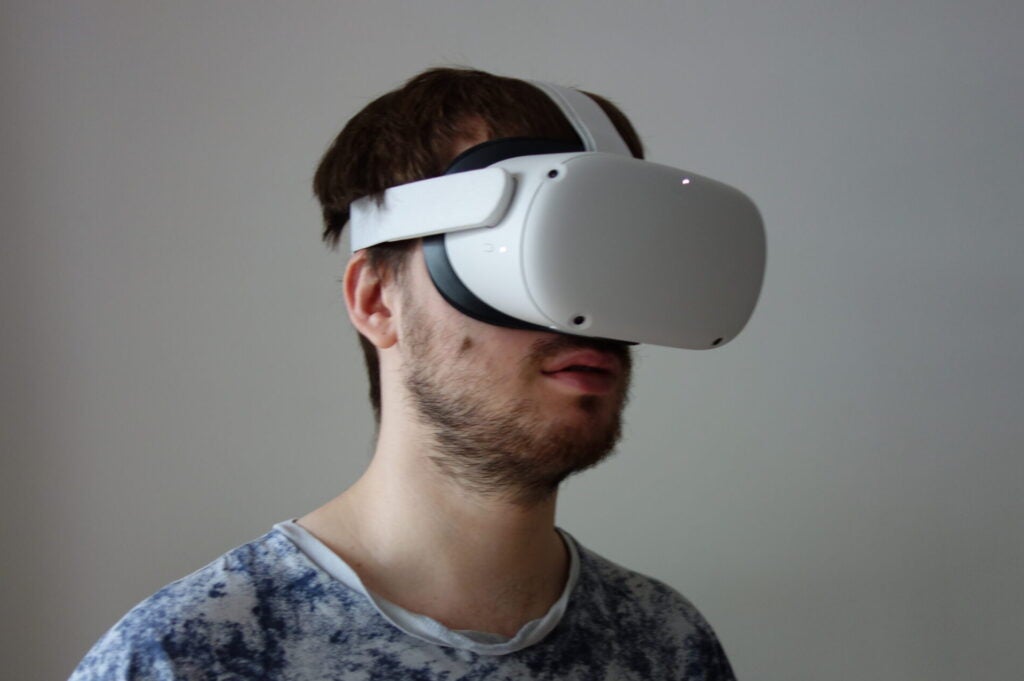
It’s all in the eyes (and hands)
Quest Pro can capture your natural expression, meaning your facial expressions will be captured and transferred to your avatar in real time (Meta is making Avatars a major focus for the Quest Pro use cases). Quest 2 was not capable of this, which is why your avatar was an expressionless emotion-free weirdo.
“Smiles, eyebrow raises, winks and all” will be transmitted, the company says. For those virtual meetings and collaborative sessions, there’s also eye tracking, so you can show you’re paying attention to the right people in meetings. We think we preferred the old way.
Meta has also included some new controllers, which unlike the Quest 2 controllers, have independent sensors that can track 360 degree movements, independently from the headset. The controller design has also been tweaked and there are new haptics. If you want some of this action, you don’t have to upgrade your headset, you can buy them separately for £299/$299.
These are some hi-tech specs
Of course, most of that massive price bump comes because Meta is packing the Quest Pro with its most advanced components yet. There’s a new Qualcomm Snapdragon XR2+ processor that’s 50% more powerful for VR than the original XR2 within the Quest 2. There’s better thermal dissipation too, which Meta says significantly increases performance. There’s double the RAM too with 6GB on the Quest 2, compared with 12GB as standard on the Quest Pro.
The displays have also had a large upgrade beyond those aforementioned slimmer pancake lens optics. The Pixel density offers 37% more PPI, than the Quest 2. “Additionally, there’s a 25% improvement in full-field visual sharpness in the centre view, 50% improvement in the peripheral region, and 1.3X larger colour gamut than Meta Quest 2,” Meta says in the announcement.


